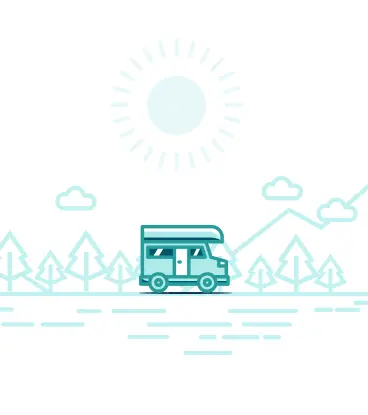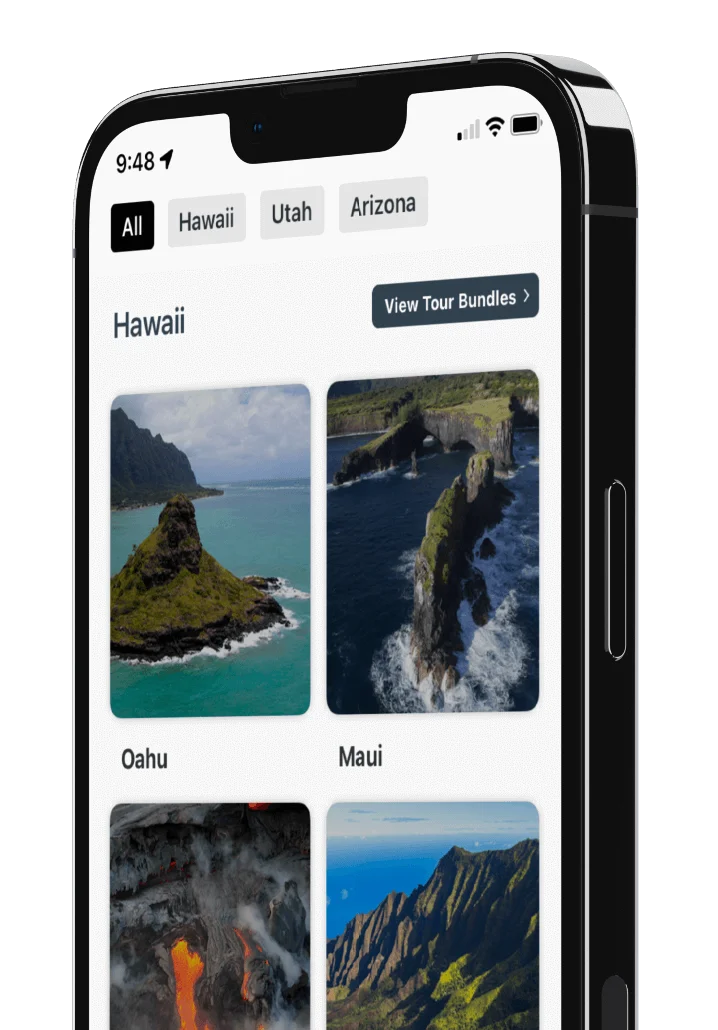
Amazing Things To Do In Redwood National Park


About Redwood National and State Parks
Tucked away in the northwest corner of California is Redwood National and State Parks–home to the world’s tallest trees.
In this mild and misty climate, coast redwoods or Sequoia sempervirens can grow to dizzying heights of over 300 feet tall. Talk about giants!
They’re also some of the oldest living things on earth. The average redwood lives into the hundreds, and some are still going strong after two thousand years.
With Shaka Guide's Redwood National and State Parks Tour, you’ll explore these towering giants at your own pace. No rush, no crowds—just you and the majesty of the forest.
Visitors come from around the world to walk through the parks’ ancient groves and gaze up at these magnificent forest sentinels.
But there’s more to these parks than big trees. Stunning coastal beaches, beautiful rivers, a primeval fern-draped canyon, and grassy meadows frequented by majestic Roosevelt elk all make a visit to Redwood National and State Parks an unforgettable experience.
Amazing Things to Do in Redwood National and State Parks
It only takes about an hour to drive through the parks along Highway 101, but there are numerous activities and adventures that can keep you exploring for days. Here are just a few of them:
1. Take a Scenic Drive
Some of the most spectacular overlooks and scenic hikes are off-the-beaten path, on one of the parks’ rugged, scenic drives.
Howland Hill Road,
 Robin Montgomery
Robin Montgomery
A historic stagecoach road, winds through the heart of Jedediah Smith Redwoods State Park, offering an awe-inspiring drive through giant redwoods and featuring trailheads to the popular Stout Grove and Grove of the Titans. The mostly unpaved 10-mile road takes about 45 minutes to drive.
Enderts Beach Road
 Robin Montgomery
Robin Montgomery
Continues a couple miles past Crescent Beach up to the Enderts Beach trailhead. It also features the spectacular Crescent Beach Overlook with stunning views of the Pacific and Crescent City in the distance.
The paved but narrow road follows a section of the original Highway 101 which was eventually moved to higher ground.
Requa Road
Winds up to Klamath River Overlook for a stunning view of the ocean where it meets the Klamath River. It’s a favorite spot to catch a sunset or watch for whales.
Coastal Drive
 Shutterstock Image
Shutterstock Image
The southern side of the Klamath River offers another breathtaking coastal viewpoint at High Bluff Overlook with a bonus stop at an old WWII radar station.
This nine-mile loop has steep grades, and sharp curves, and takes about 45 minutes to drive.
Newton B. Drury Scenic Parkway
 Shutterstock Image
Shutterstock Image
The only scenic drive in the park that is paved and suitable for all vehicles. The ten-mile parkway showcases the old-growth forests of Prairie Creek Redwoods State Park and takes about 30 minutes to drive.
Pull over to see the fascinating Corkscrew Tree or stop at the impressive Big Tree Wayside. You’ll also find numerous hiking trails that can be accessed at the Prairie Creek Redwoods State Park Visitor Center at the southern end of the parkway.
Davison Road
Passes by Elk Meadows, a popular hot spot for viewing the park’s majestic Roosevelt Elk. Past the meadows, the road narrows and turns into gravel as it winds past the trees toward the coast.
It then follows the shore along Gold Bluffs Beach and finally dead ends at a parking lot where you can access both the beach and the trailhead to Fern Canyon.
The rugged fourteen-mile round-trip drive includes several potholes and a few seasonal stream crossings. RVs, trailers, and low-clearance vehicles are not advised.
NOTE Gold Bluffs Beach/Fern Canyon requires a park pass or entrance fee, and during the summer, you’ll need an online parking permit which is reserved online up to one day in advance.
RELATED ARTICLES: Biggest Trees in Redwood National and State Parks
Bald Hills Drive
This Drive climbs way up into the Bald Hills where visitors can see giant trees in Lady Bird Johnson Grove and catch spectacular views from Redwood Creek Overlook.
The end of the 17-mile road features Schoolhouse Peak, the tallest peak in the park, at 3,097 feet or 944 meters. Although it’s mostly paved, the narrow road is not suitable for RVs and trailers.
NOTE Except for Newton B. Drury Scenic Parkway, the rest of the scenic drives in the park are narrow, windy, and mostly unpaved. There are no suitable spots for large vehicles to turn around. Consequently, RVs, motorhomes, and trailers are not advised on these roads.
2. Take a Hike
What could be more awe-inspiring than a walk among these ancient giants? Or is it more breathtaking than a trek along the rugged coastline?
Redwood National and State Parks offer a variety of hikes for different abilities and interests.
To see big trees
 Grove of the Titans/ Robin Montgomery
Grove of the Titans/ Robin Montgomery
Try the iconic Stout Grove and Grove of the Titans in Jedediah Smith Park; the short and sweet Revelation Trail and longer Karl Knapp to Cathedral Trees Loop in Prairie Creek Park; or the beautiful walk through Lady Bird Johnson Grove in Redwood National Park.
For coastal hikes
 Yurok Loop Trail/ Robin Montgomery
Yurok Loop Trail/ Robin Montgomery
Try Enderts Beach at low tide–the best time to see colorful starfish and anemones; the Yurok Loop Trail for stunning sea stacks; the trek to Hidden Beach in a secluded cove; or the short trails down from either High Bluff Overlook or Klamath River Overlook for closer views of the rugged coastlines.
For an out-of-this-world experience, explore prehistoric-looking Fern Canyon, where scenes from the blockbuster movie Jurassic World were filmed.
For longer, more challenging hikes, check with a ranger.
3. Stop at a Visitor Center
 Prairie Creek Visitor Center/ Robin Montgomery
Prairie Creek Visitor Center/ Robin Montgomery
These are great places to pick up park maps, talk with rangers, check out exhibits, buy souvenirs, and take advantage of flush toilets. There are five park visitor centers:
The park’s main information center is in Crescent City.
Hiouchi Redwoods Visitor Center, located across from Jedediah Smith Campground, offers low-cost, ranger-led summer kayak tours on the Smith River.
Jedediah Smith Redwoods Visitor Center is open seasonally in the campground.
Prairie Creek Visitor Center is at the southern end of the Newton B. Drury Scenic Parkway
The Thomas H. Kuchel Visitor Center is the park’s main visitor center in Orick and the only visitor center located directly on the coast.
Although not part of the parks, the Yurok Country Visitor Center in Klamath is a wonderful place to pick up locally-made souvenirs and learn about the history, language, and culture of the Yurok people.
4. Walk up in the Redwood Canopy at Trees of Mystery
 Shutterstock Image
Shutterstock Image
If you’ve ever wondered what it would be like to climb up in a redwood tree, then check out the Trees of Mystery.
This fun, family-friendly tourist attraction is located on Highway 101 between Crescent City and Klamath and features:
- a skywalk in the redwood canopy
- a gondola ride through the treetops to a spectacular mountain overlook
- beautifully kept trails with interpretive signs
- a museum
- gift shop and more
You can’t miss the giant Paul Bunyan and Babe statues just outside the museum along the highway.
There’s an admission fee for entering the tourist attraction, but the museum, gift shop, and photo ops with the giant statues are free.
5. Watch a sunset
 Klamath River Overlook/ Robin Montgomery
Klamath River Overlook/ Robin Montgomery
Over the Pacific from one of the many coastal overlooks such as:
- Crescent Beach Overlook
- Klamath River Overlook
- High Bluff Overlook
- Redwood Creek Overlook, or
- the beach behind the Thomas H. Kuchel Visitor Center
6. Go whale watching
During their annual migration periods, which are typically November through December and March through April.
The same overlooks and beaches that make great sunset viewing are also the perfect spots to look for whales as well as other sea mammals like sea lions and seals.
Or, for close-up views of these gentle giants, you can book a whale-watching tour out of Crescent City. Don’t forget to pack your binoculars!
7. Kayak on the Wild and Scenic Smith River
 Myrtle Beach Smith River/ Robin Montgomery
Myrtle Beach Smith River/ Robin Montgomery
The beautiful, pristine waters of the Smith River are great for kayaking, tubing, or swimming. Ask about low-cost ranger-led kayak tours at the Hiouchi Visitor Center.
The Day Use Area in Jedediah Smith Redwoods Campground and nearby Myrtle Beach are also popular swimming holes.
8. Explore the Klamath River in a traditional dugout redwood canoe
 Klamath River/ Robin Montgomery
Klamath River/ Robin Montgomery
The Yurok tribe offers guided tours of the Klamath River in traditional dugout redwood canoes.
Learn about the wildlife, geography, and history of the Klamath River from these expert guides on a once-in-a-lifetime Yurok Canoe Tour.
9. Take a scenic Klamath River Jet Boat Tour
...and travel 45 miles upstream, spotting wildlife, and learning about the history and culture of the Yurok Tribe.
10. Explore Crescent City
Visit the Ocean World Aquarium, take a self-guided tsunami walking tour, or visit the Battery Point Lighthouse for a unique adventure back in time.
11. Take the Shaka Guide Tour
To get the most out of your experience on the parkway, download Shaka Guide’s Redwood National and State Parks Tour.
This app is like having a personal tour guide in the car! Enjoy a magical adventure through the majestic redwood forests and rugged California coast with all the planning done for you.
This engaging, self-guided audio tour includes:
- turn-by-turn navigation
- detailed directions
- practical travel advice
- hiking recommendations, and
- engaging stories about the history, geology, and people of Northern California’s spectacular redwood forests
Before Visiting Redwood National Park
 Shutterstock Image
Shutterstock Image
Entrance Fees
There is no entrance fee to enter the park. However, a fee or park pass is required to park in the Jedediah Smith Campground Day Use Area as well as at Gold Bluffs Beach/Fern Canyon Trailhead. These must be paid in cash or check (Cards are currently not accepted.)
NOTE During the summer months, hikers will need to reserve a free online permit at least one day ahead of time in order to park at the Fern Canyon Trailhead at Gold Bluffs Beach.
RELATED ARTICLES: How to Get to Redwood National and State Parks
How to Get there
By Air
If you’re flying in from out of state, the closest major airports are in San Francisco, CA, or Portland, OR. Both are about a six-hour drive from either end of the parks.
Though much more limited in flight options, there are regional airports in Medford, OR, and Redding, CA, as well as a small county airport in Crescent City that offers direct flights from Oakland, CA.
By Car
From the Oregon Coast, take Highway 101 south to Crescent City. When taking Central Oregon, take I-5 south to Grants Pass and then head southwest on 199 towards Crescent City.
From the California Coast, head north on Highway 101 to Orick. From Central California, head north on I-5 to Redding then head west on 299 toward the coast, and then head north on 101.
By Train
If you’re coming from southern California, take the train to Redd where you can rent a car and drive three hours to the park’s southern entrance. If you’re coming from the north, you can take the train to Eugene, OR, and rent a car for the four-hour drive to Crescent City and the park’s northern entrance.
*Although there’s an Amtrak station in Klamath Falls, OR, which is technically closer to Crescent City than Eugene, the train ride is longer and would increase the overall travel time significantly.
Cell Service
There is cell service in Crescent City, but it’s pretty sketchy in the rest of the park. Plan ahead and download maps and apps for offline use.
NOTE Google Maps does not always work accurately in the park and can sometimes lead you astray.
Restaurants
 Sea Quake/ Robin Montgomery
Sea Quake/ Robin Montgomery
There are no food options in any of the parks. However, you’ll find a small number of restaurants, cafes, and coffee shops in Crescent City to the north and a few around Klamath.
There are relatively few food options south of Klamath. Here are a few popular places you can try on your visit to the redwoods. *Note, some restaurants have seasonal or weekly hours, so check their websites ahead of time.
Hiouchi Cafe, located near Jedediah Smith Campground offers breakfast, lunch, dinner, and orders to go.
Chart Room features seafood and is located on a pier with views of Crescent City Harbor.
SeaQuake Brewing is a popular brewpub offering a diverse selection of craft beer, pizza, and bar bites in Crescent City near Beachfront Park. This place can get crowded on weekends, so get there early or plan to wait.
Country Club Bar is a great place to pick up made-to-order burgers and fries or fish and chips in Klamath. Kids aren’t allowed inside the bar, but orders can be placed at the window.
The Historic Requa Inn, located near the mouth of the Klamath River, is open seasonally for delicious farm-style breakfasts.
Alternately, stop at a local grocery and pack a picnic to enjoy along the banks of the Smith River at Jedediah Smith Park, or at Lagoon Creek, Elk Meadows, or one of the spectacular coastal overlooks.
Things to Bring to Redwood National Park
- Cell phone (with tour downloaded!)
- Cell phone charger
- If traveling in the summer and planning to visit Gold Bluffs Beach/Fern Canyon, bring your online permit (free, reserve at least one day in advance)
- Park pass, cash or check for parking at Jedediah Smith Day Use Area or Gold Bluffs Beach (There is no fee or pass needed to access the rest of the park.)
- Map (don’t rely on GPS here!) Grab one at the visitor center or purchase online
- Tide Chart (You can look this up on your phone or check at the visitor center)
- Binoculars for whale watching or elk spotting
- Waterproof rain jacket or poncho (It rains a LOT here–sometimes even in the summer)
- Dress in warm layers (layer with fleece or down jacket)
- Waterproof shoes/sandals for the beach/hiking Fern Canyon
- Hiking boots/sturdy shoes with non-slip soles
- Sunscreen
- Sunglasses
- Hat
- Insect repellent
- Swimsuit/towel for swimming in Smith River (Swimming in the ocean is not recommended due to strong currents.)
- Water bottles
- Snacks and/or picnic food
- First Aid kit
- Emergency roadside assistance kit
- Hand sanitizer and/or hand soap and water to wash. (Most picnic areas and trailheads have only vault toilets with no running water.)
RELATED ARTICLES: Best Hikes and Trails in Redwood National Park
Best Time to Visit Redwood National Park
 Fern Canyon/ Robin Montgomery
Fern Canyon/ Robin Montgomery
The best time to visit Redwoods National and State Parks really depends on what kind of trip you are looking for. Do you enjoy warm weather and don’t mind crowds?
Then you’ll want to visit in the summer months between June and September when you’ll have a better chance of catching the sun and dodging the rain. Since this is the most popular time for visitors, you’ll want to book lodging well ahead of time.
If you don’t mind cooler temperatures, and a chance of rain, but fewer people–then spring or fall is perfect for you. Schedule a trip for March through May or after October to take advantage of the off-season.
Just note that during the shoulder seasons, visitor center hours may vary and you’ll want to check the parks’ current conditions for road and trail closures that may occur due to weather.
Traveling in an RV, motorhome, or trailer
Please note that most of the parks’ scenic drives and amazing hikes are on narrow, windy, and unpaved roads where larger vehicles like RVs, motorhomes, and trailers are not advised.
If you don’t have a separate car to drive around in, consider renting a car from Crescent City for a day or two. That way, you won’t miss the parks’ many hidden treasures.
Traveling with Kids
Make sure to stop at a visitor center and check out the Junior Ranger Program.
Traveling with Pets
If you brought along your furry friends, please remember to keep them leashed at all times and know where pets are and aren’t allowed. Pets are allowed in: developed campgrounds,
- on some beaches
- at picnic areas
- on roads, and
- in any parking area
They are not, however, allowed on any park trails (with a few exceptions - like the Cal-Barrel Road) or in park buildings unless your pet is an official service dog. Please also remember to pick up after your pet.
Traveling with a wheelchair or stroller
ADA-accessible trails include:
- the Simpson-Reed Grove and Leiffer Loop in Jedediah Smith
- Big-Tree Wayside
- Elk Prairie Trail
- Foothills and
- RevelationTrail in Prairie Creek, and
- a portion of the Lady Bird Johnson Trail in Redwood National Park
(While all these are deemed ADA accessible, some paths are rougher than others, so check with a ranger for details.)
Safety Tips
On the Trail: Always lock your car and hide valuables. Mosquitoes and ticks can be thick in the summer, so don’t forget the bug spray. Also, keep your eyes open for poison oak which grows along the trails.
At the Beach
 Robin Montgomery
Robin Montgomery
Before hitting the beach, check for storm or high surf advisories. Also, check the tide chart (available online or at the visitor center).
The best time to enjoy the beach and explore the fascinating tidepools is close to low tide. Also, beware of “sneaker waves.” These large, powerful waves can reach far upshore and strike unexpectedly.
They are strong enough to knock you down and drag you out to sea. So never turn your back on the surf, and supervise your children at all times.
Lastly, swimming at these Northern California beaches is not advised. The cold water temperature and strong rip currents make swimming here extremely hazardous.
Tsunamis and Earthquakes
Redwood National and State Parks are located in one of the most seismically active regions in the country.
So, if you feel an earthquake or notice the ocean suddenly recede, head for higher ground or move inland immediately.
Wildlife
It’s rare that you’d see a bear or cougar in the redwoods, but chances of seeing wild Roosevelt elk are pretty high. While generally docile, elk can get aggressive if they feel threatened.
The best rule of thumb is to stay at least 50 yards away from all wildlife. And remember to never approach or feed wild animals.
About the California Redwoods
 Robin Montgomery
Robin Montgomery
Located along Northern California’s scenic Highway 101, Redwood National and State Parks are a unique partnership of four parks:
- Jedediah Smith Redwoods State Park
- Del Norte Coast Redwoods State Park
- Prairie Creek Redwoods State Park, and
- Redwood National Park
The parks stretch for fifty miles between Crescent City to the north and Orick to the south.
California State Parks and the National Park Service work together to manage these 132,000 acres of redwood parklands, including almost 40,000 acres or 45 percent of the remaining old-growth redwood forests.
The original caretakers of this incredible land are the Tolowa Dee-ni and Yurok peoples who have lived in this region of Northern California for thousands of years.
Today, the tribes work closely with the parks to restore and care for this place they call home.
Parting Thoughts
Visiting Redwoods National and State Parks is a magical experience. From the deep silence of the ancient redwood forests to the crashing surf of the rugged coast, this place inspires awe like no other.
Whether you spend just one day or several days here, you’ll find lots to see and explore in California’s unforgettable redwoods.
Ready to take the tour? Check out Shaka Guide's Redwood National Park Tour!
We hope that we’ve given you all the information you need to make the most of your day. Your vacation is extremely important to us so if you have any questions feel free to reach out at aloha@shakaguide.com.
For more detailed information to help you plan, check out our Redwood National Park Itinerary and Know Before You Go article.
Like this article? Share it on Pinterest!

RELATED ARTICLES:
How to Get to Redwood National and State Parks
Biggest Trees in Redwood National and State Parks
Best Hikes and Trails in Redwood National Park

 Buy Gift Card
Buy Gift Card


















